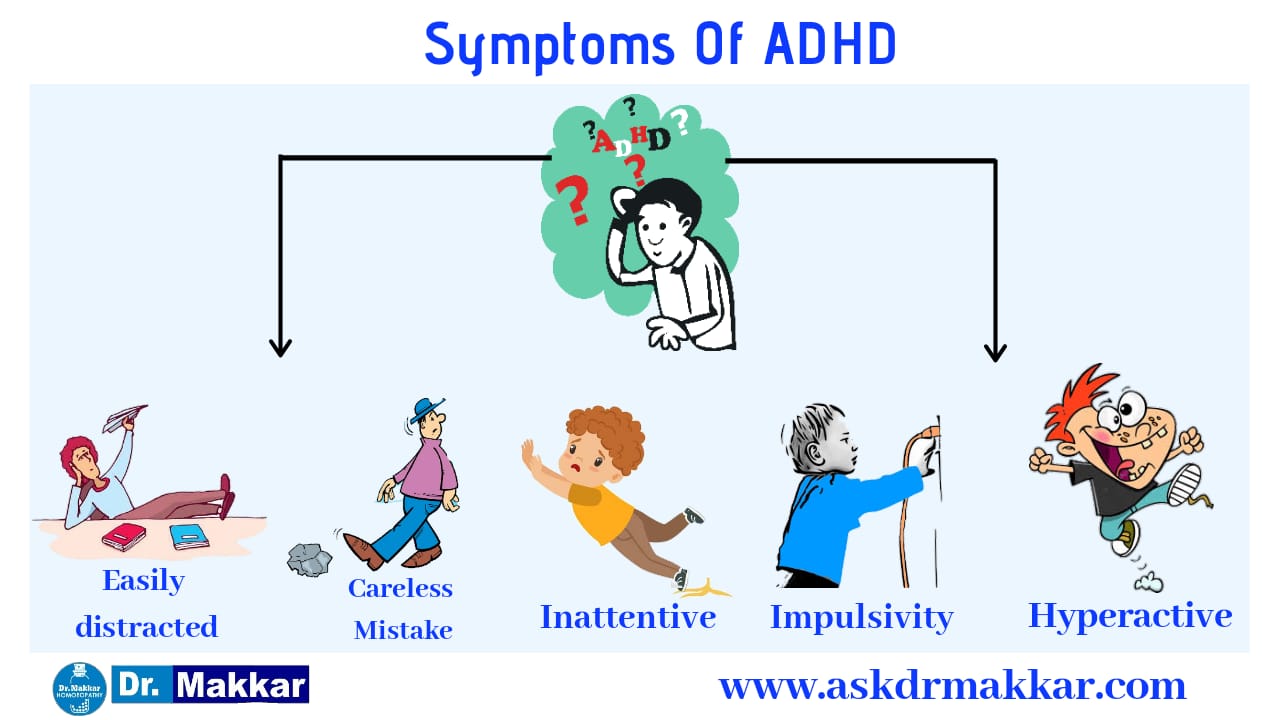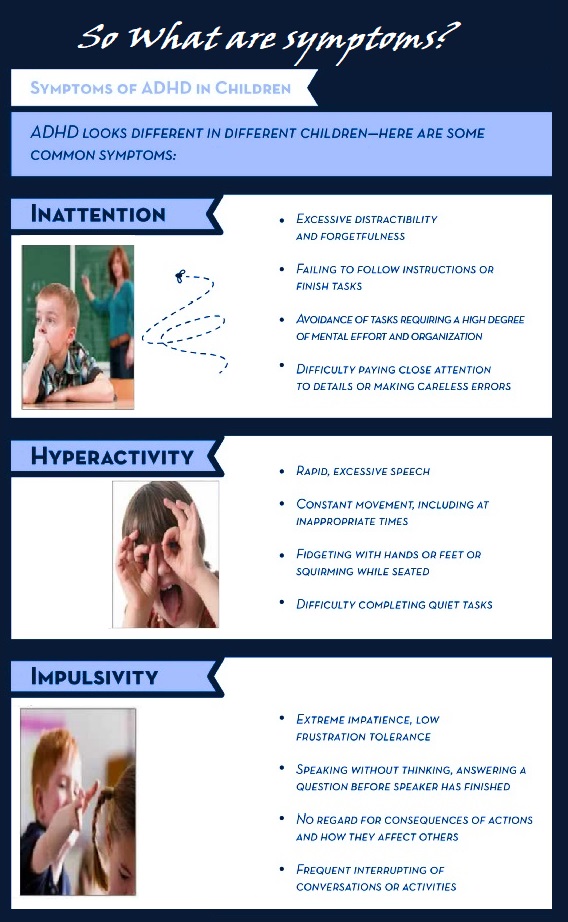
Symptoms of ADHD will appear over the course of many months, often with the symptoms of impulsiveness and hyperactivity preceding those of inattention, which may not emerge for a year or more. Different symptoms may appear in different settings, depending on the demands the situation may pose for the child’s self-control. A child who “can’t sit still” or is otherwise disruptive will be noticeable in school, but the inattentive daydreamer may be overlooked. The impulsive child who acts before thinking may be considered just a “discipline problem,” while the child who is passive or sluggish may be viewed as merely unmotivated. Yet both may have different types of ADHD. All children are sometimes restless, sometimes act without thinking, sometimes daydream the time away. When the child’s hyperactivity, distractibility, poor concentration, or impulsivity begin to affect performance in school, social relationships with other children, or behavior at home, ADHD may be suspected. But because the symptoms vary so much across settings, ADHD is not easy to diagnose. This is especially true when inattentiveness is the primary symptom.
In the most current assessment guidelines published by the American Psychiatric Association, Diagnostic and Statistical Manual for Mental Disorders IV (DSM4), the disorder is known as ADHD and has several types including:
(1) predominantly inattentive; (2) predominantly impulsive or (3) combined. Individuals with this condition usually have many (but not all) of the following symptoms:
Inattention:
Child often fails to finish what he starts
Child doesn’t seem to listen
Child easily distracted
Child has difficulty concentration or paying attention
Child doesn’t stick with a play activity
Impulsivity:
Child often acts without thinking & later feels sorry
Child shifts excessively from one activity to another
Child has difficulty organizing work
Child needs a lot of supervision
Child speaks out loud in class
Child doesn’t wait to take turns in games or groups
Hyperactivity:
Child runs about or climbs on things excessively
Child can’t sit still and is fidgety
Child has difficulty staying in his seat and bothers classmates
Child excessive activity during sleep
Child always on the “go” and acts as if “driven”
Emotional Instability:
Angry outbursts
Social loner
Child blames others for problems
Child fights with others quickly
Child very sensitive to criticism
The diagnosis is made by “ruling out” other medical or psychiatric causes for the symptoms and by then determining that the patient meets the DSM4 criteria for ADHD. Psychological testing can be useful to rule out learning disabilities and Continuous Performance Tests (Connor’s CPT, TOVA, IVA, Gordon Diagnostic) may help confirm the diagnosis and be helpful with titration of medication. At this time the use of imaging such as PET or SPECT is recommended for research purposes. Several professional organizations recommend against the use of these techniques due to unwarranted exposure to radiation and lack of sufficient data to enable accurate diagnosis. This diagnosis may coexist with anxiety, depression, Tourette’s, bipolar disorder, conduct disorder and learning disabilities.
True ADHD patients usually start showing symptoms by the time they start school. Some very impulsive children are diagnosed as early as 2 or 3 years old. Another group appears to develop more severe symptoms around the fourth grade. These children may have always had ADHD but were able to compensate for the condition. As school requires more work and more organization skills, these children may reach a point where they become unable to compensate and exhibit “full blown” ADHD symptoms. Some children may remain undiagnosed until they are in their teens. More recently adults have been diagnosed as having Attention Deficit Disorder. These individuals had the disorder as children but were not properly identified during their childhood.
